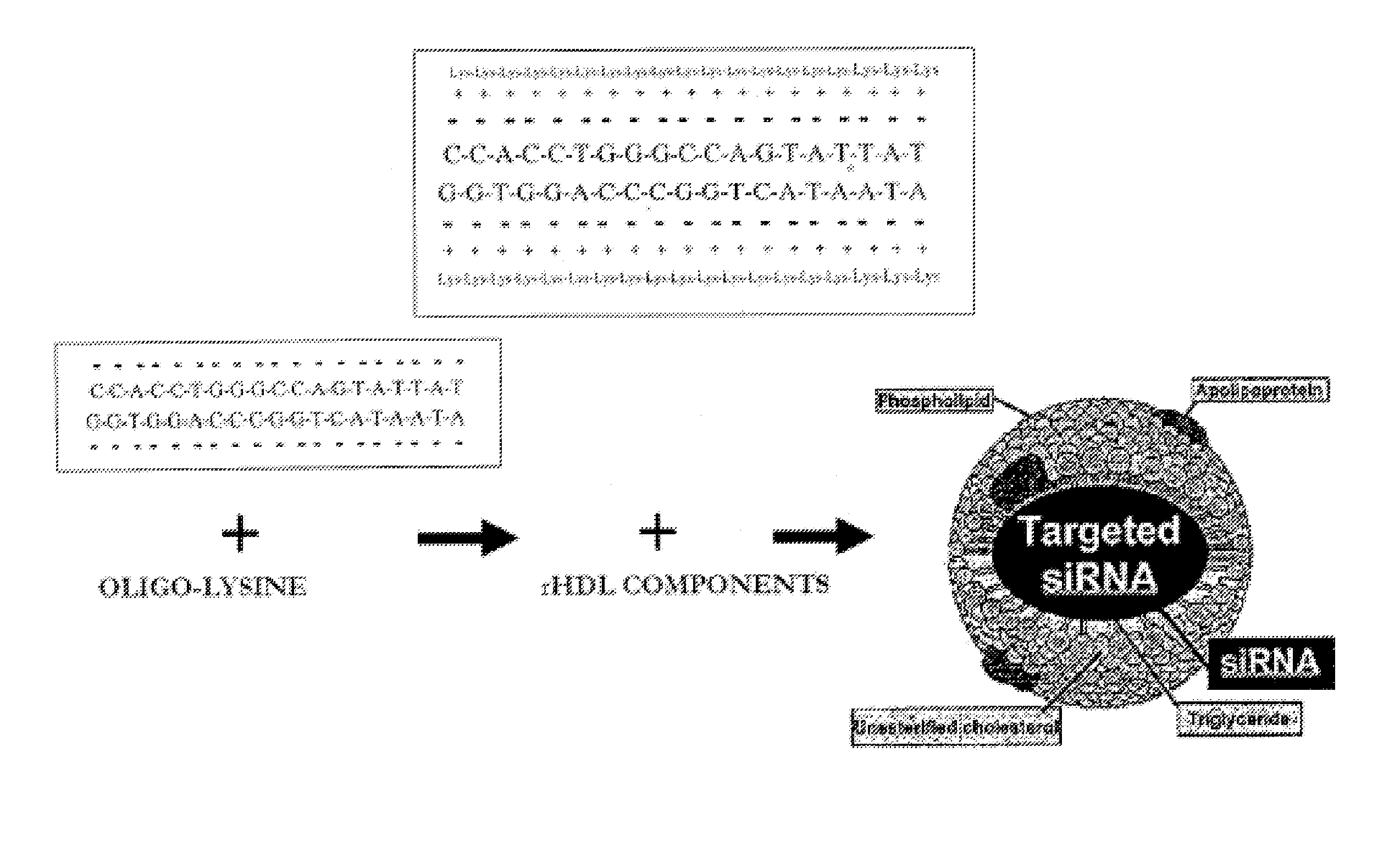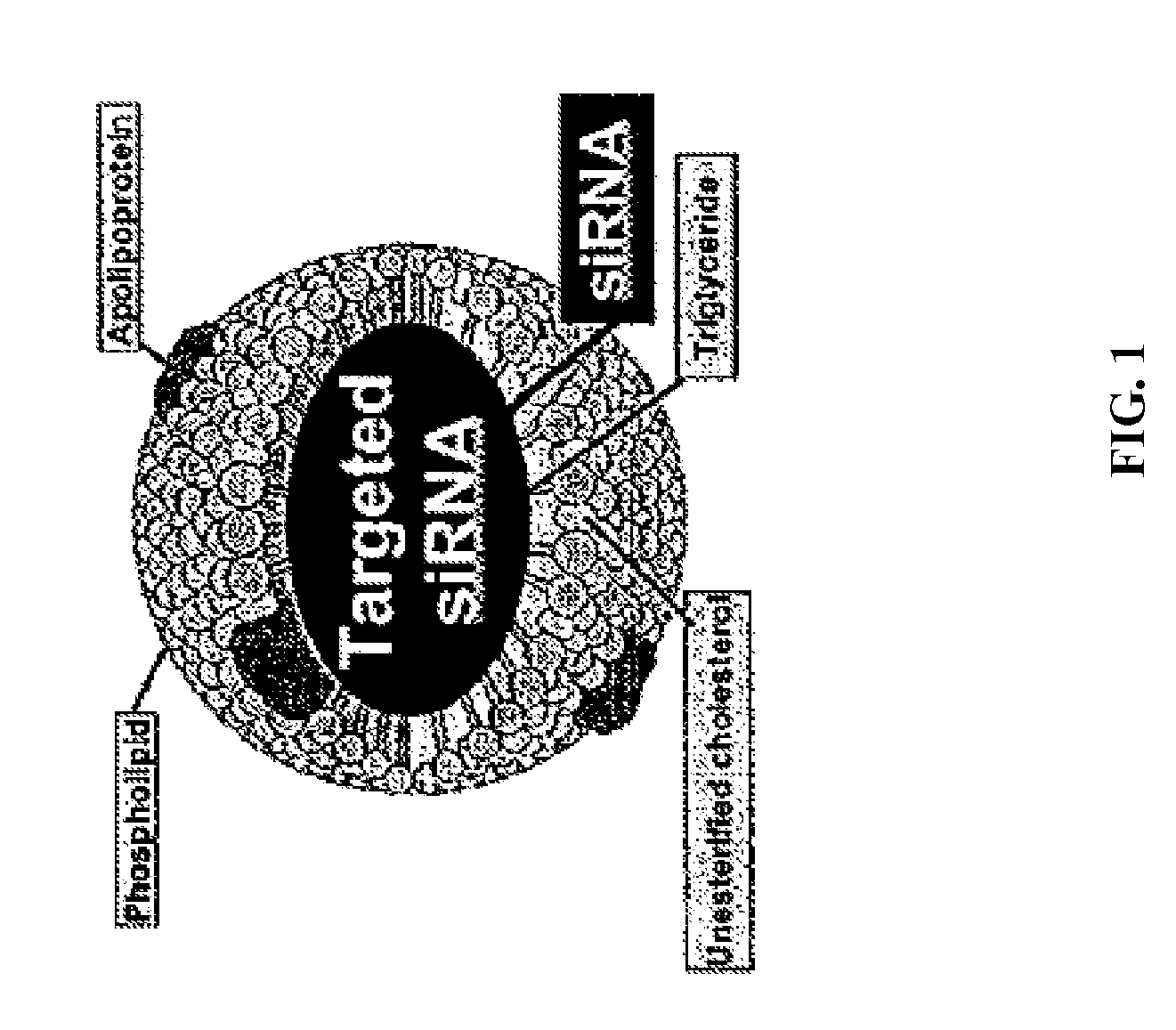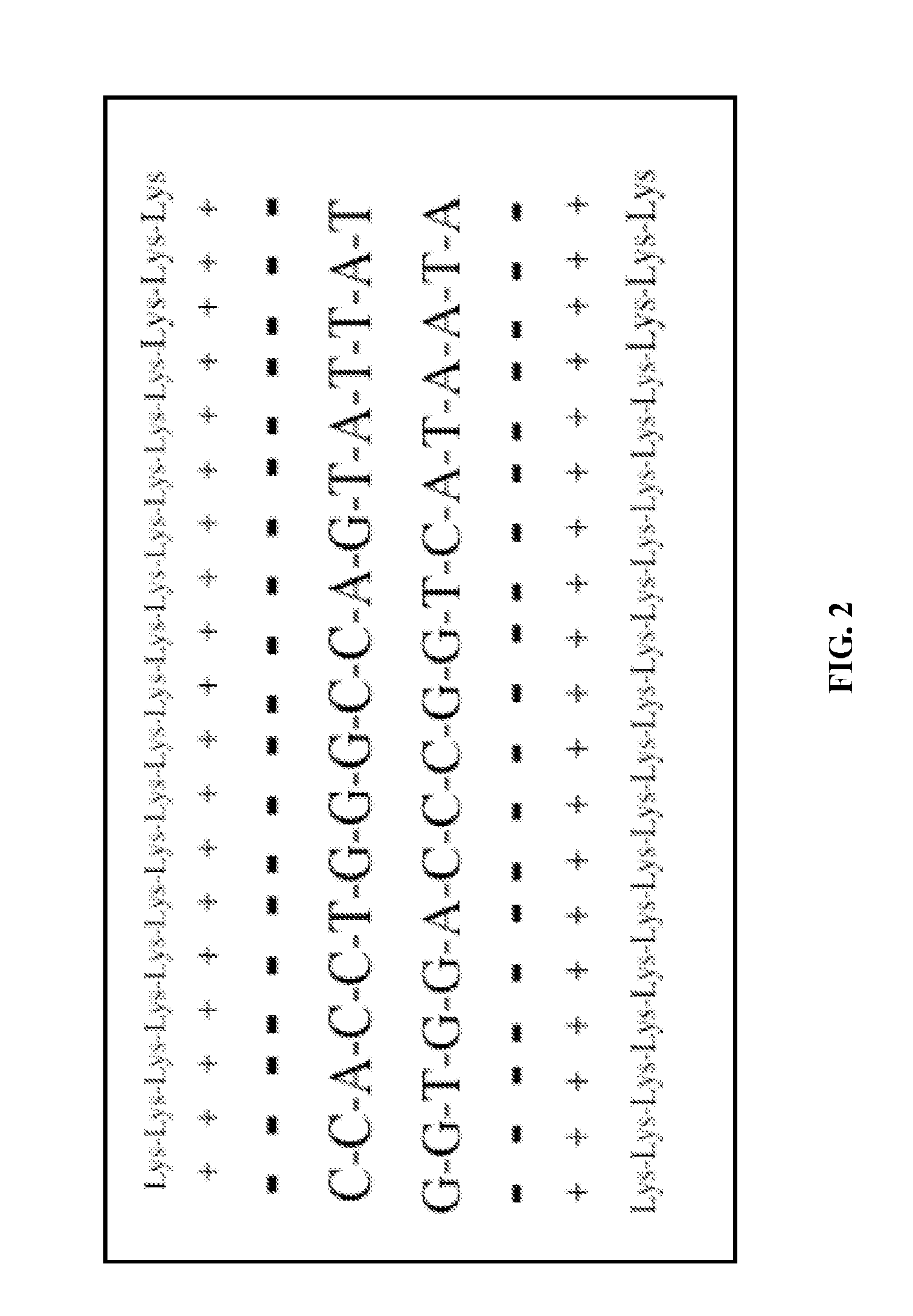HDL particles for delivery of nucleic acids
a technology of high density lipoprotein and nucleic acid, which is applied in the direction of drug compositions, peptides, microcapsules, etc., can solve the problems of affecting the therapeutic effect of nucleic acids, and affecting the therapeutic effect of rna molecules, and achieving the effects of efficient delivery of nucleic acids, high density lipoprotein (hdl), and small interference rna (siRNA
- Summary
- Abstract
- Description
- Claims
- Application Information
AI Technical Summary
Benefits of technology
Problems solved by technology
Method used
Image
Examples
example 1
Example of Protocol for rHDL / siRNA Preparation
[0196]Nuclease free water was used throughout these procedures, including for the preparation of buffer solutions.
[0197]Annealing of sense and anti-sense oligonucleotide strands. Samples of the siRNA are suspended in 100 μl Annealing Buffer (10 mM HEPES, 100 mM potassium acetate, 2 mM magnesium acetate, pH 7.4). Heat for 1 min at 90° C. in a water bath followed by incubation for 1 hr at 37° C.
[0198]Formation of the siRNA / oligolysine complex. The conditions for the optimum incorporation of a generic siRNA into rHDL were established by preliminary studies.
[0199]
RNA (μg)Oligolysine (μg)Control50Sample55
[0200]Incubate the mixture at 30° C. for 30 min and prepare siRNA oligolysine complex.
[0201]rHDL / siRNA assembly. A mixture of egg yolk phosphatidyl choline (PC) in CHCl3 with free cholesterol, cholesteryl oleate (CE), and 5 μg of siRNA was prepared with a molar ratio of Apo A-I: cholesterol:cholesteryl oleate:PC=1:5:1.3:115M. The volume of th...
example 2
Delivery of siRNA Using rHDL / siRNA Nanoparticles
[0204]The modified rHDL delivery system described herein (FIG. 2) is appropriate for the delivery of all types of nucleic acids. The delivery system requires the modification of HDL-containing liposomes to suppress the ionic character of nucleic acid, such as siRNA (FIG. 3). FIG. 2 illustrates the approach, using the positively charged oligolysine units (MW 500-2000) for the efficient packaging and subsequent delivery of the focal adhesion kinase (FAK)-siRNA that was used in the present studies to demonstrate silencing of the FAK expression (FIG. 4). Fluorescently-labeled siRNA has been successfully delivered into tumor, liver, kidney, spleen, and lung of nude mice by intravenous injection. In vivo Alexa-555 siRNA distribution in HeyA8 tumor tissue was examined after a single siRNA dose. Tumor samples were exposed to anti-f4 / 80 antibody to detect scavenging macrophages and Alexa 488-tagged secondary antibody. Alexa 555 siRNA was seen i...
example 3
Preparation and Characterization of rHDL / Paclitaxel Particles
[0205]Preparation of Recombinant ApoA-I. Recombinant Apo-A-I is prepared as described in Ryan et al., 2003, and was used to prepare rHDL / paclitaxel complexes. The particles are prepared by a process involving cholate dialysis to produce a spherical structure with the pharmaceutical enclosed in the interior hydrophobic core region. The lipid mixture (egg yolk phosphatidylcholine, cholesterol and cholesteryl oleate in the ratio of 3.8:1:88.5) and 2 mg paclitaxel is dried under N2 to a thin film and dispersed in dimethylsulfoxide and subsequently in 1.4 ml of 10 mM Tris, 0.1 M KCl, 1 mM EDTA, pH 80). Sodium cholate, 140 μl (100 mg / ml stock in [0.15 M NaCl, 0.003 M KCl, 0.15 M KH2PO4, pH 74, designated as PBS]) is added to produce mixtures with a final PC to cholate molar ratio of about 1:1.6. Apo A-I (12.7 mg / ml) in 0.4 ml of PBS is added to this mixture and the final volume is adjusted to 2 ml with PBS. The lipid / potein / chol...
PUM
| Property | Measurement | Unit |
|---|---|---|
| molecular weight | aaaaa | aaaaa |
| molecular size | aaaaa | aaaaa |
| molecular weight | aaaaa | aaaaa |
Abstract
Description
Claims
Application Information
 Login to View More
Login to View More - R&D
- Intellectual Property
- Life Sciences
- Materials
- Tech Scout
- Unparalleled Data Quality
- Higher Quality Content
- 60% Fewer Hallucinations
Browse by: Latest US Patents, China's latest patents, Technical Efficacy Thesaurus, Application Domain, Technology Topic, Popular Technical Reports.
© 2025 PatSnap. All rights reserved.Legal|Privacy policy|Modern Slavery Act Transparency Statement|Sitemap|About US| Contact US: help@patsnap.com



